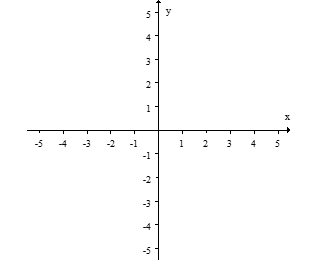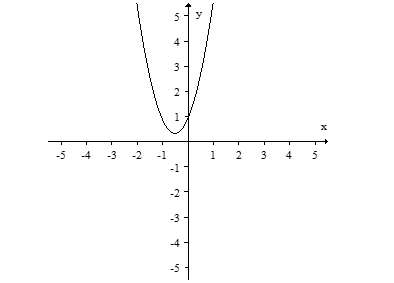Correct Answer

verified
Correct Answer
verified
Short Answer
Find the standard form of the equation of a parabola whose vertex is
 and passes through the point
and passes through the point

Correct Answer

verified
Correct Answer
verified
Short Answer
Factor the polynomial as a product of linear factors.

Correct Answer

verified
Correct Answer
verified
Multiple Choice
For the polynomial function
 , find the y - intercept.
, find the y - intercept.
A) -24
B) -96
C) 24
D) 4
F) A) and C)
Correct Answer

verified
Correct Answer
verified
Multiple Choice
Rewrite the quadratic equation in standard form by completing the square. Y = x2 - 9x
A) y = (x + 9/2) 2 - 9/4
B) y = (x - 9/2) 2
C) y = (x - 9/2) 2 - 81/4
D) y = (x - 9) 2 + 81/4
F) B) and C)
Correct Answer

verified
Correct Answer
verified
Short Answer
Find a polynomial of minimum degree that has these zeros. 0, 3 + 3i, 3 - 3i
Correct Answer

verified
Correct Answer
verified
Multiple Choice
Match the polynomial function with its graph. 
A) ![]()
B) ![]()
C) ![]()
D) ![]()
F) None of the above
Correct Answer

verified
Correct Answer
verified
Short Answer
Use long division to divide 9x3 + 36x2 + 57x + 42 by 3x + 6.
Correct Answer

verified
Correct Answer
verified
Short Answer
Divide the polynomials using synthetic division.

Correct Answer

verified
Correct Answer
verified
Short Answer
For the rational function
 , find the equation of the slant asymptote.
, find the equation of the slant asymptote.
Correct Answer

verified
Slant asym...View Answer
Show Answer
Correct Answer
verified
View Answer
Multiple Choice
Find a polynomial of minimum degree that has the zeros
 (with multiplicity 2) and
(with multiplicity 2) and
 (with multiplicity 2) .
(with multiplicity 2) .
A) f(x) = x4 + 6x2 + 9
B) f(x) = x4 - 6x2 + 9
C) f(x) = x4 + 9
D) f(x) = x2 + 6x + 9
F) B) and D)
Correct Answer

verified
Correct Answer
verified
Multiple Choice
Use Descarte's Rule of signs to determine the possible number of positive real zeros and negative real zeros. P(x) = 5x3 + 2x2 + 4x - 9
A) ![]()
B) ![]()
C) ![]()
D) ![]()
F) A) and D)
Correct Answer

verified
Correct Answer
verified
Short Answer
Rewrite the quadratic function in standard form by completing the square.

Correct Answer

verified
Correct Answer
verified
Short Answer
Use the intermediate value theorem to approximate the real zero in the indicated interval. Approximate to two decimal places.

Correct Answer

verified
Correct Answer
verified
Short Answer
Divide the polynomials by either long division or synthetic division.

Correct Answer

verified
Correct Answer
verified
Short Answer
A rancher has 600 linear feet of fencing and wants to enclose a rectangular field and then divide it into two equal pastures with an internal fence parallel to one of the rectangular sides. What is the maximum area of each pasture?
Correct Answer

verified
Correct Answer
verified
Multiple Choice
Find the vertex of the parabola associated with the quadratic function. 
A) (-16, -47)
B) (16, -47)
C) (-16, 47)
D) (16, 47)
F) A) and C)
Correct Answer

verified
Correct Answer
verified
Short Answer
Sketch the graph of the polynomial function,
 , using transformations of known polynomial functions.
, using transformations of known polynomial functions.

Correct Answer

verified
Correct Answer
verified
Multiple Choice
Use the rational zero theorem to list the possible rational zeros. P(x) = 7x3 - 4x2 + 3x - 21
A) ![]()
B) ![]()
C) ![]()
D) ![]()
F) C) and D)
Correct Answer

verified
Correct Answer
verified
Short Answer
Find the equation for the graph.

Correct Answer

verified
Correct Answer
verified
Showing 81 - 100 of 141
Related Exams